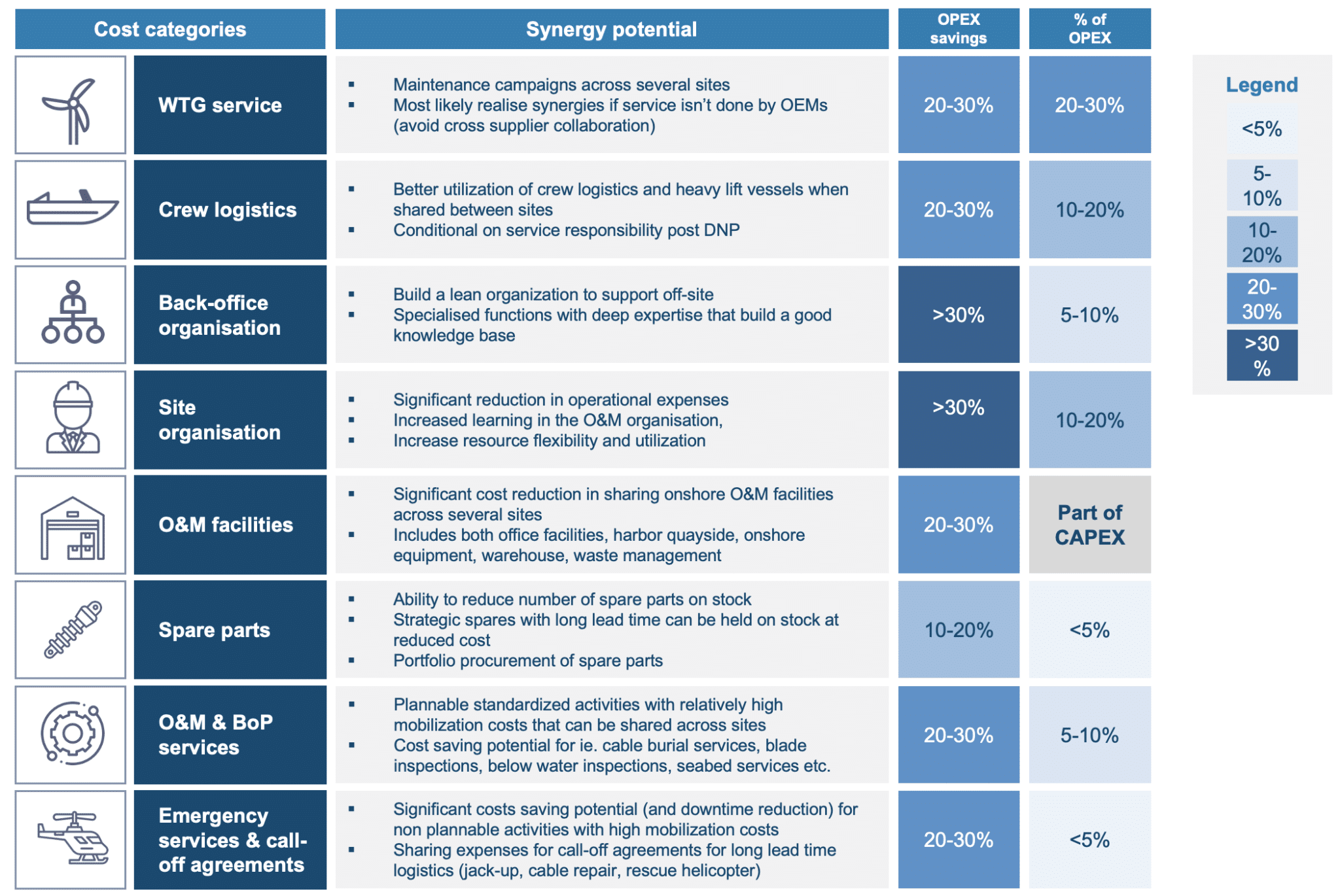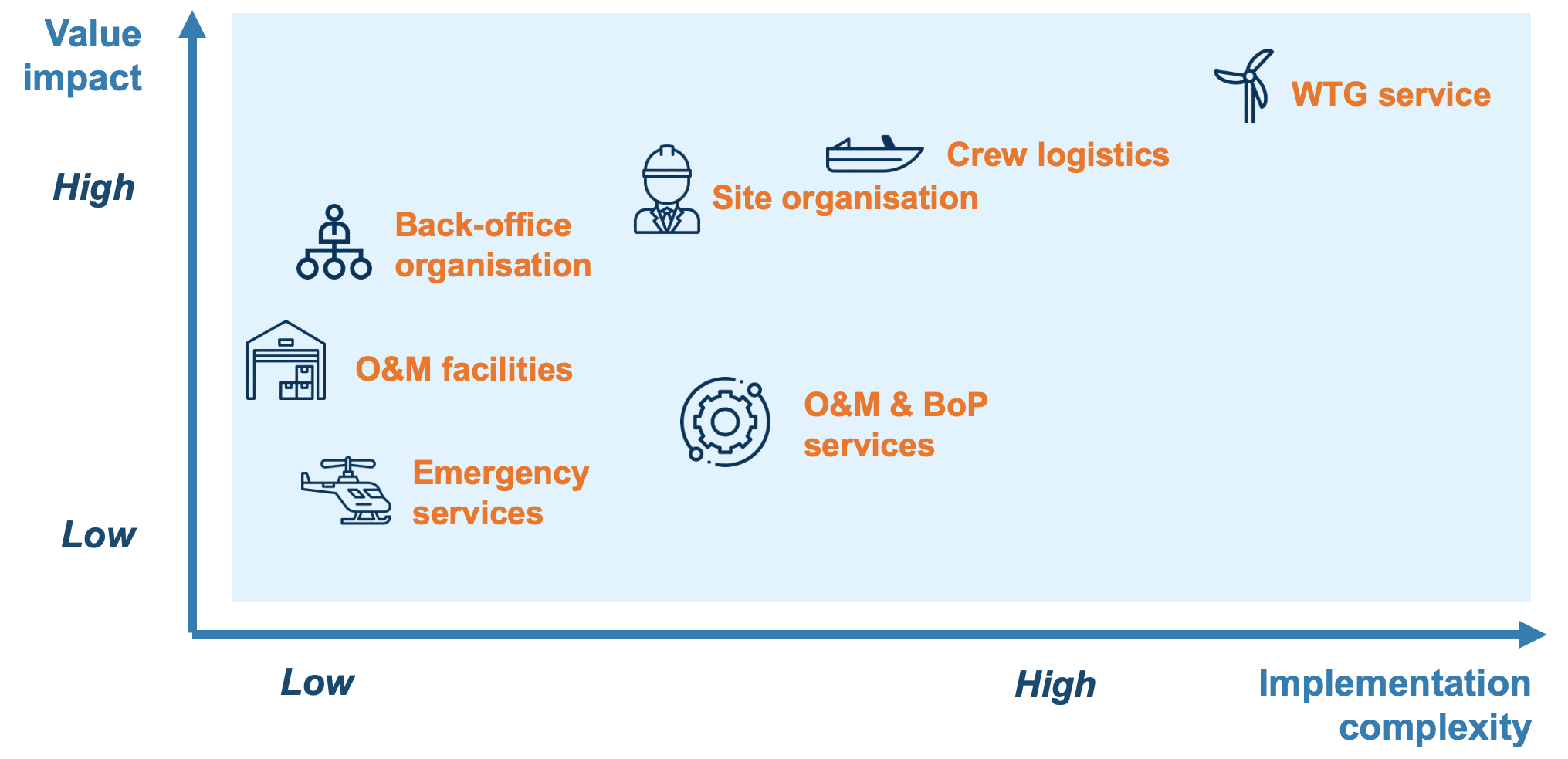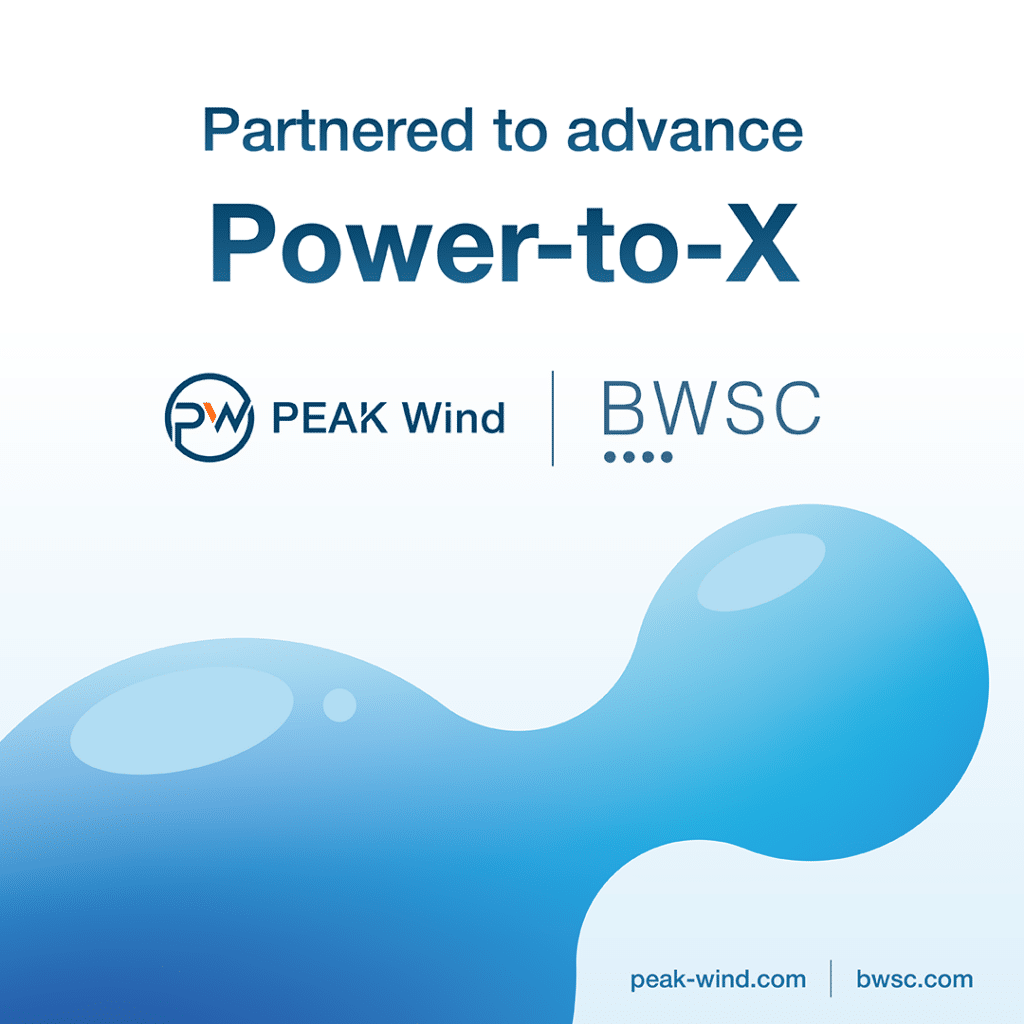A collaborative approach to operations optimization
As more sites become operational in the same geographic areas, opportunities for collaboration increase significantly
Collaborative efforts are needed in the offshore wind industry, to optimize offshore wind farm operations and reduce operational expenditure (OPEX). As the industry matures and more sites come into operation in the same geographic areas, the opportunities for collaborative efforts across wind farm sites increase significantly.
Site characteristics of the respective windfarms, technical platform, ownership structure, supply and service contracts as well as relations with OEMs and partners are key characteristics that influence the ability to materialize synergies across projects.
Any wind farm owner should do an assessment of potential OPEX savings that can be realized through collaborative efforts between offshore wind farm sites in their near vicinity. Based on bottom up OPEX cost modelling, an illustrative example is provided, that shows the categories and potential savings that can be realized.
Besides assessing potential OPEX savings from collaborative initiatives, risk mitigation strategies through shares emergency services should be mapped out. These collaborative efforts often contribute to optimized availability.
Why read this article?
- Recognize the savings potential and cost variations of shared O&M activities between sites
- Understand opportunities for risk mitigation strategies through collaborative efforts
- Learn about the differences in implementation complexity of potential shared O&M activities
Large cost saving potential across several O&M activities, if operational services are shared between multiple sites
An analysis of the different OPEX cost categories identifies the size of the synergy potential. Significant cost savings are identified across multiple cost categories, if operations is shared across several sites (2 x 400 MW sites). The most significant synergy potentials are identified in cost categories that (i) do not grow linearly with increase in size (i.e. have high mobilization costs or stand-by fees) and (ii) are independent of contractual arrangement with Original Equipment Manufacturers (OEMs) or owners.

The implementation complexity of shared site services depends largely on OEM interfaces and ownership structures
A conceptual ranking of each cost category in terms of their value vs. their individual implementation complexity will ensure focus is kept on the right activities.
Cost categories with no dependencies to OEMs or contractual arrangements with partners, are typically less complex to implement than synergies with many dependencies.
Work packages with relatively standardized scope across sites are, relatively speaking, easier to implement, than those that are non- standardized (i.e. seabed surveys, cable burial surveys, blade inspections).

First step for any wind farm owner to realize synergies with others, is identifying the main cost drivers and their relative size of total OPEX. In most circumstances, there will be significant potential in optimizing OPEX by collaborative efforts between offshore wind farm sites, regardless of being a site operated by the same owner or multiple owners. When engaging in collaborative activities, the largest challenges to materialize synergies will likely be related to contractual constraints with OEMs and investors/partners.
Collaborative initiatives that go beyond OPEX savings can contribute to optimize operations and improve asset availability.
Above and beyond the direct reduction of OPEX, several collaborative initiatives can be implemented for risk mitigation purposes. Particularly those initiatives that allow fast mobilization and contingency for repair works during major asset breakdowns, can contribute great value at a reasonable cost, when shared between several sites.

Implementing these types of risk mitigation strategies will inevitably result in lower insurance premiums and improve availability for asset owners.
Keep in mind…
- Thinking synergies into operations from the early development phase allows greater focus on contractual flexibility towards sharing operational activities across sites
- Being multiple owners is no obstacle to realizing synergies (but increased complexity)
- Quantify the synergy potential through OPEX cost modelling & availability implications, to better prioritize efforts
Read more about how PEAK Wind can help you optimise your OPEX strategy
Want to learn more about successful operations?
Just reach out to us, we are always happy to answer your questions and get into discussions on optimized operations and asset management!
Leoni Christensen | Senior Manager | Get in touch
Lars Conradsen | Co-Founder & Head of Technology | Get in touch






